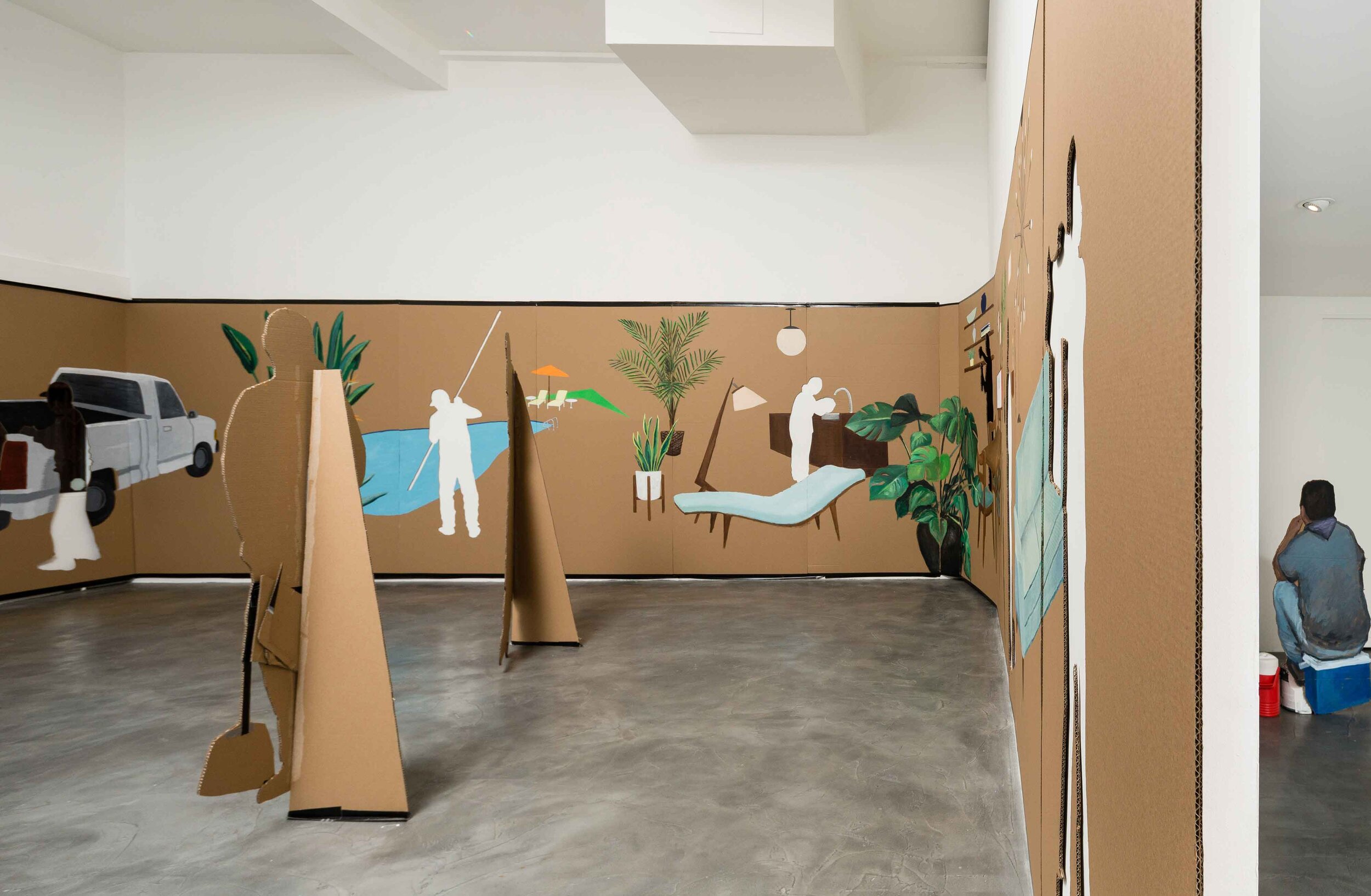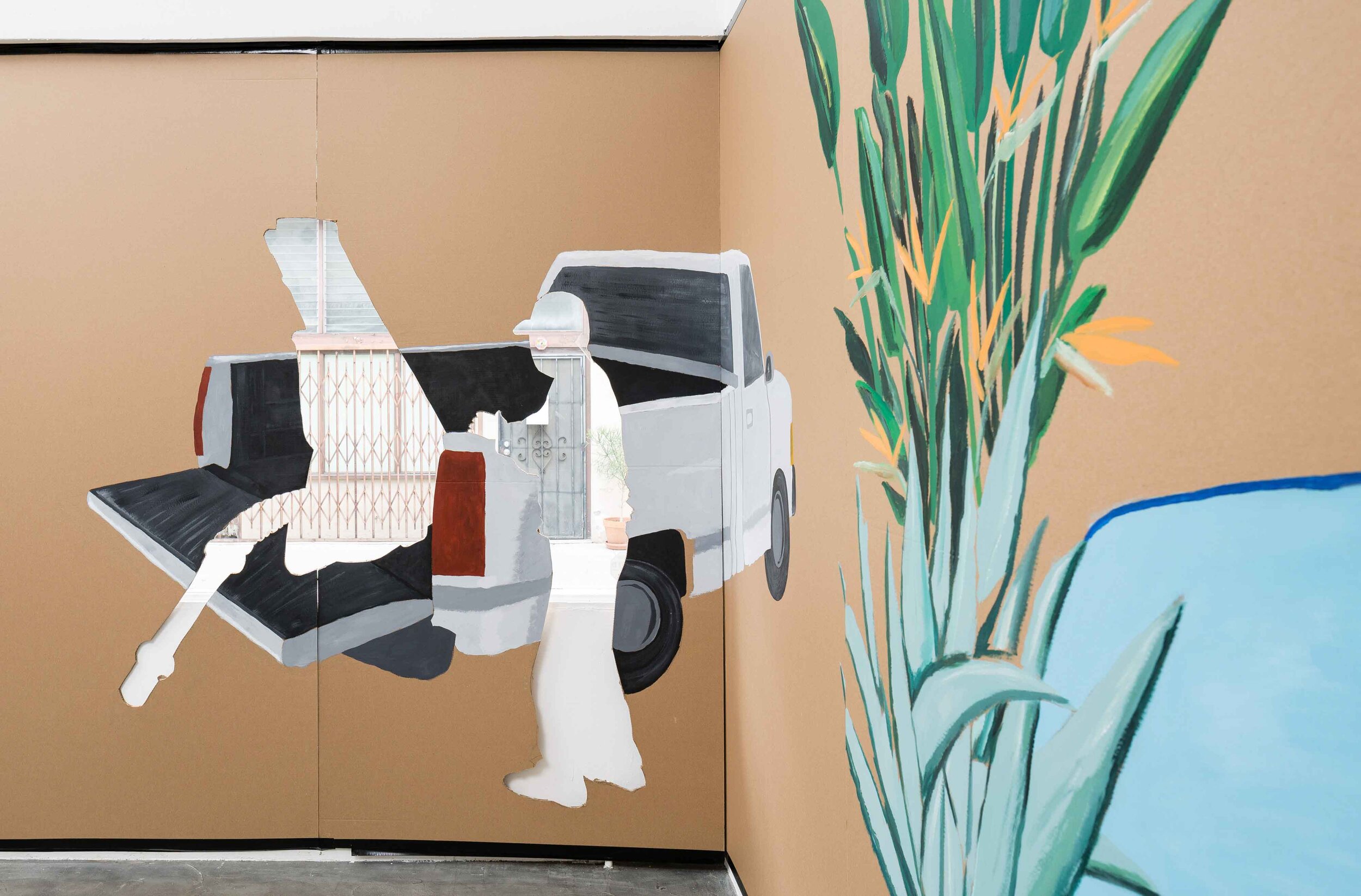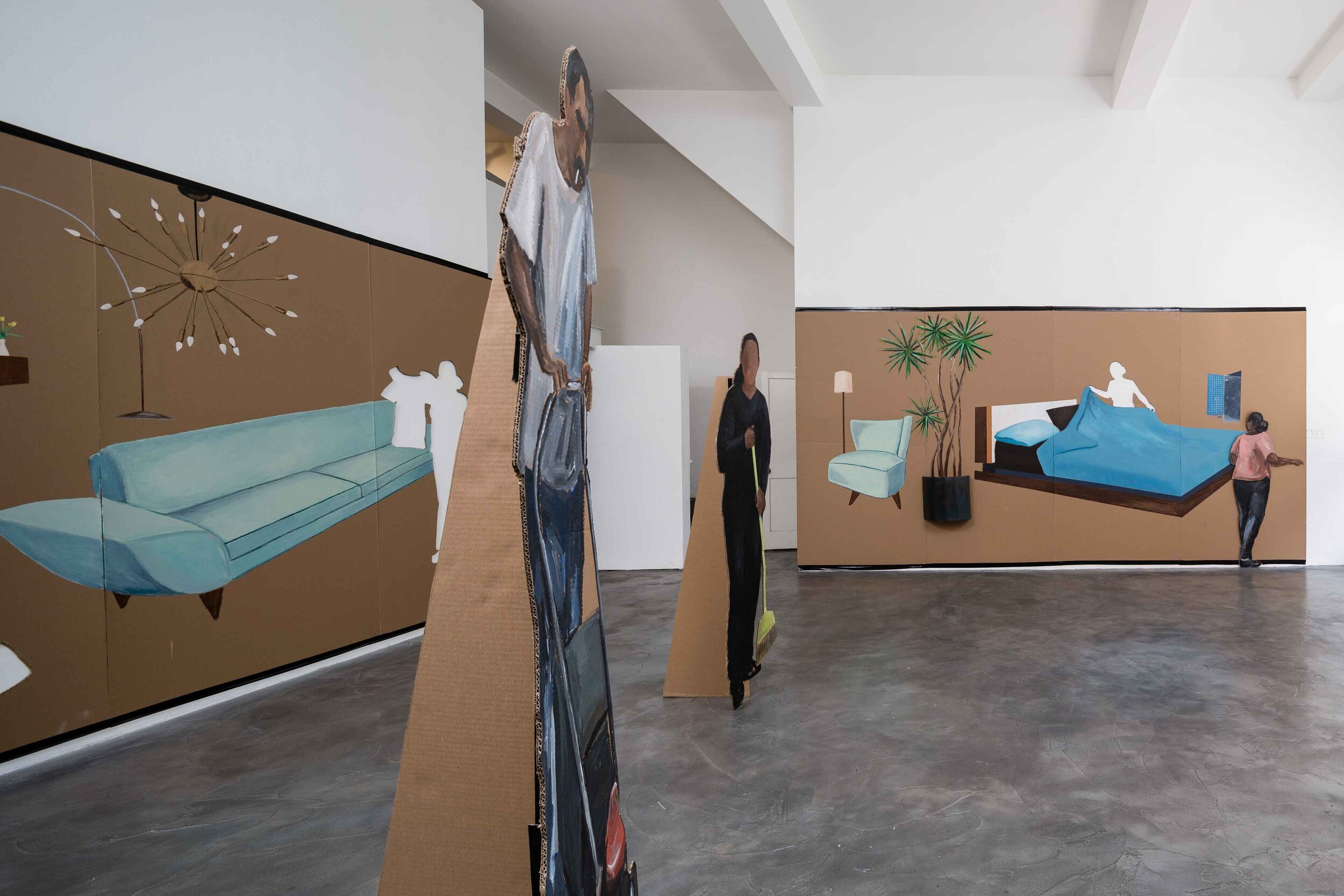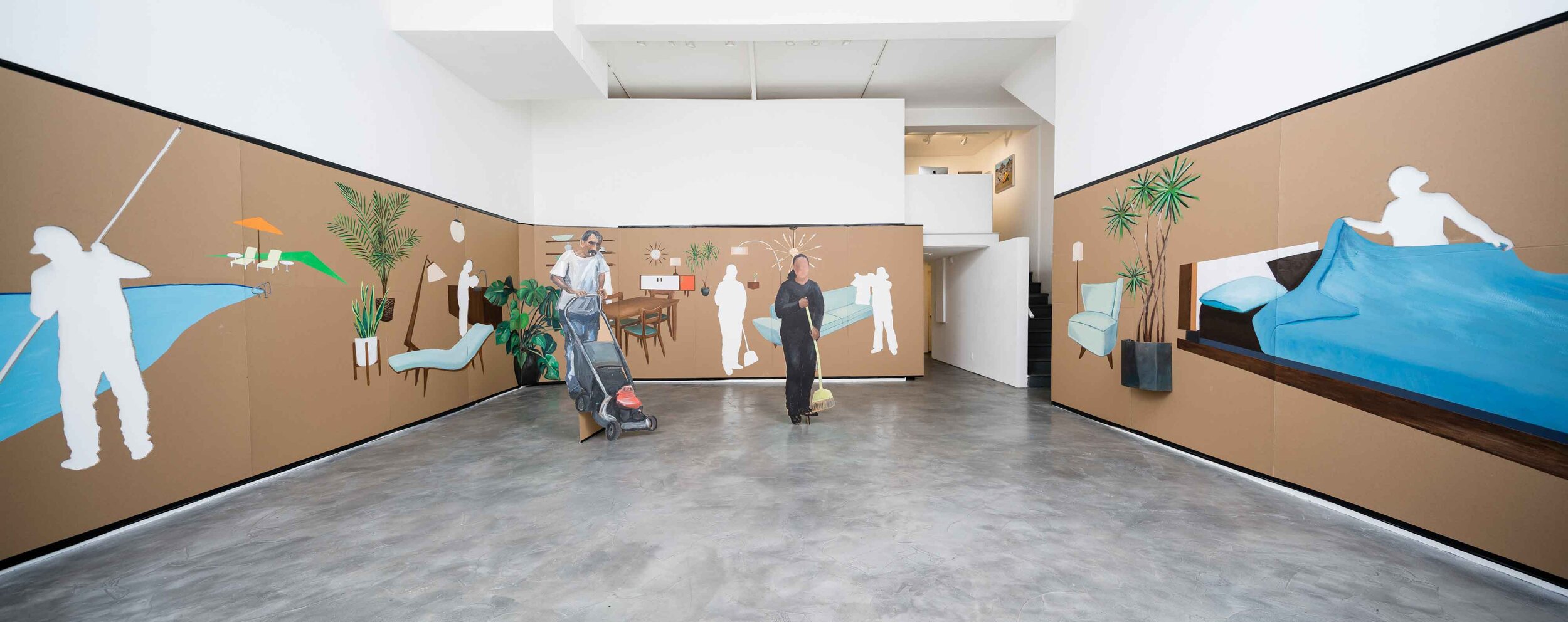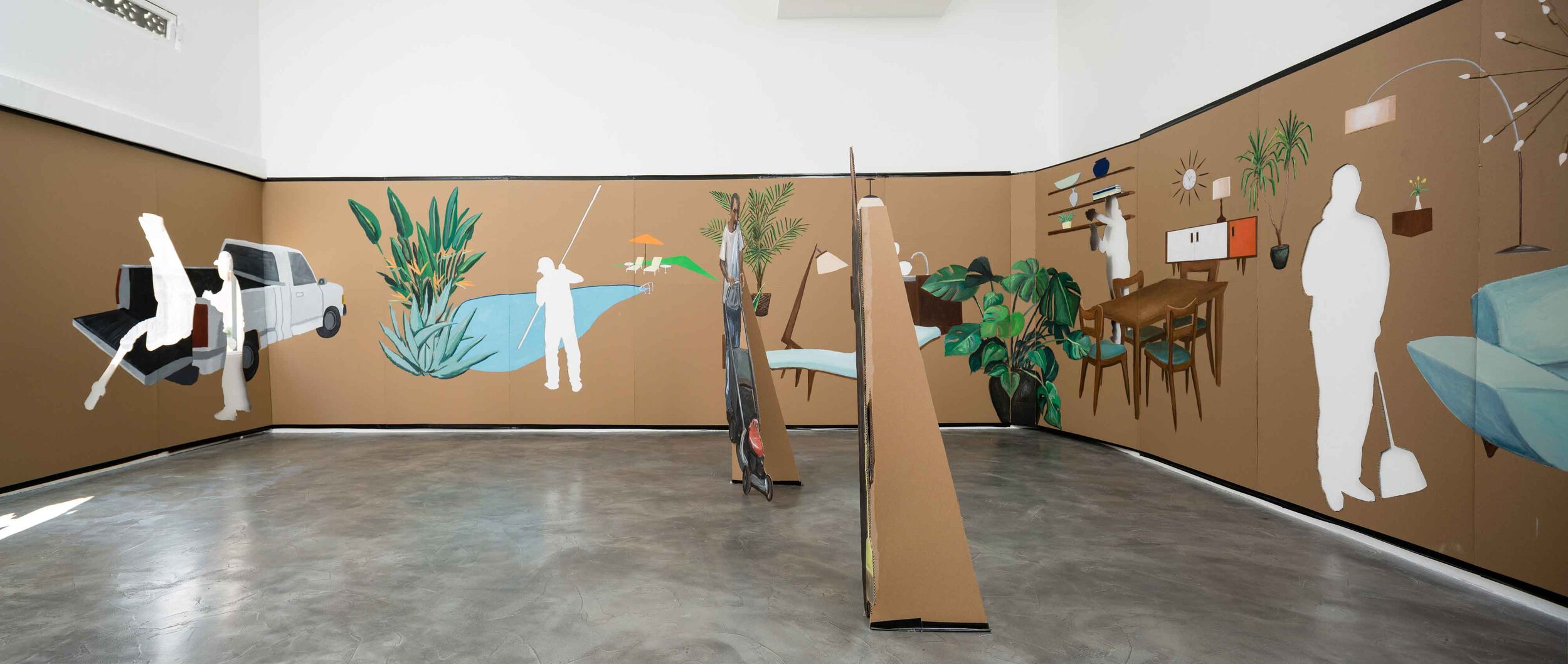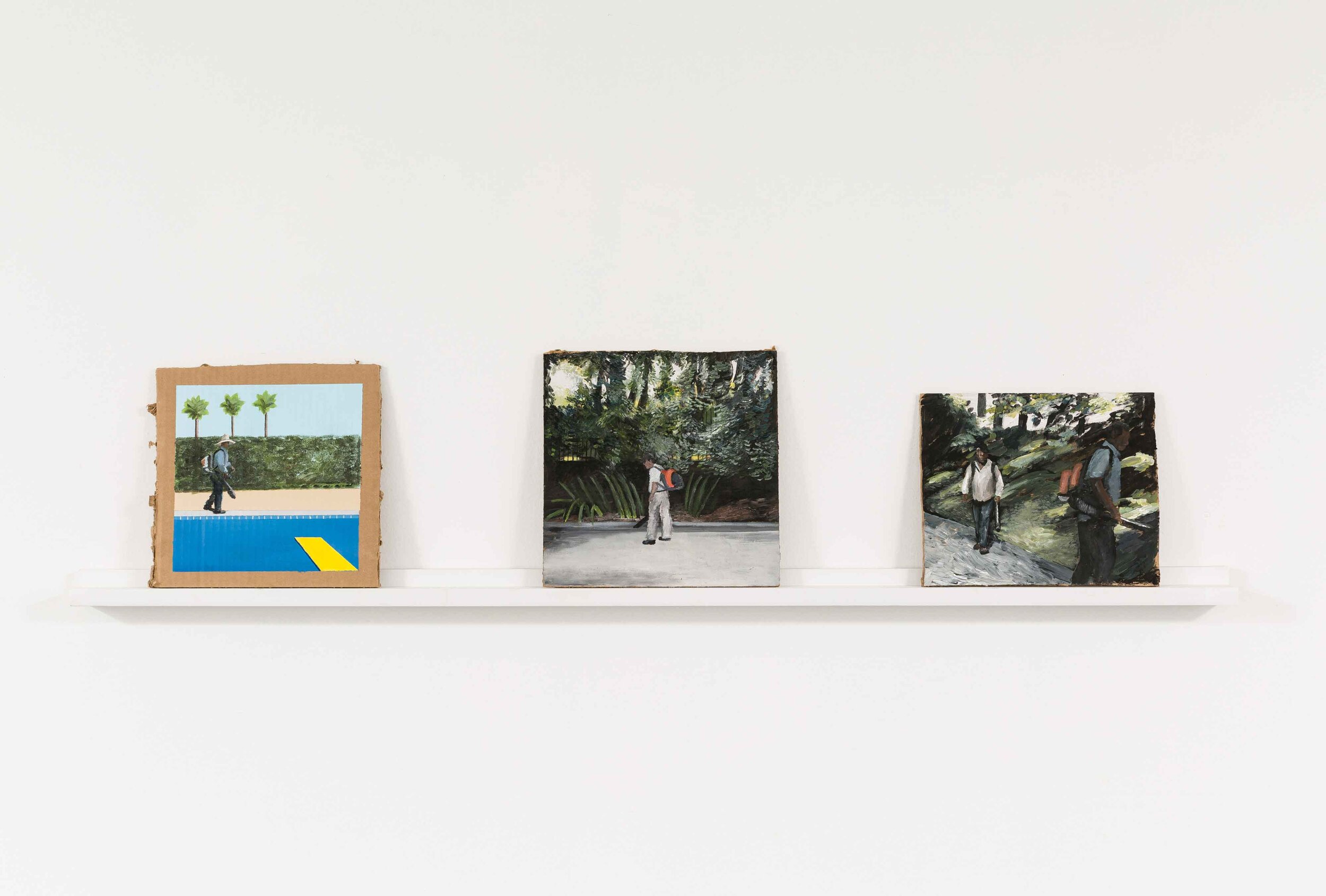Cut-Outs
Charlie James Gallery is delighted to present Cut-Outs – a room-sized installation of cardboard cut-outs by Ramiro Gomez.
Created as a culmination to his October 2014 residency at the University of Michigan Institute for the Humanities, Ramiro Gomez has created an immersive installation of cardboard settings and figures. Gomez’s life-sized cardboard figures make visible the “invisible,” the predominantly Hispanic workforce of affluent areas of Los Angeles. His subjects are the nannies, gardeners, housekeepers: the people behind our images of luxury. This work has previously shown at the University of Michigan Institute for the Humanities and Mana Contemporary Chicago, as part of the Chicago Humanities Festival 2015.
Ramiro Gomez was born to immigrant parents in the Inland Empire region of Southern California, east of Los Angeles. After leaving the California Institute of the Arts, Gomez worked as a live-in nanny with a Beverly Hills family, where he keenly observed the relationships between heads of households and their staff. Gomez found the dynamic between family and staff to be paradoxical – at once intimate, trusting and close, but also prone to abrupt dissolution for various reasons. His experiences there are the impetus for his work.
Ramiro Gomez was born in 1986 in San Bernardino, CA. His work is in the collections of the MCASD, OCMA, Crocker Art Museum, and Fundacion Televisa. In 2013 Gomez had a solo exhibition @ the UCLA Chicano Studies Research Center, and was an artist-in-residence at the CSUF Grand Central Art Center in Santa Ana, CA. He has given lectures at Stanford University, UCLA and UC Santa Barbara. The City of West Hollywood, CA awarded Gomez with a residency in 2013, where he installed a mural in West Hollywood Park – a project titled The Caretakers, which remains on view. His work has been covered in the New York Times, The Atlantic, Washington Post, NPR, the Los Angeles Times, and CNN. Gomez lives and works in West Hollywood, CA.
Ramiro Gomez will have his second full-scale solo show with the gallery in April 2016, in conjunction with the release of a monograph by Lawrence Weschler with Abrams Books.


